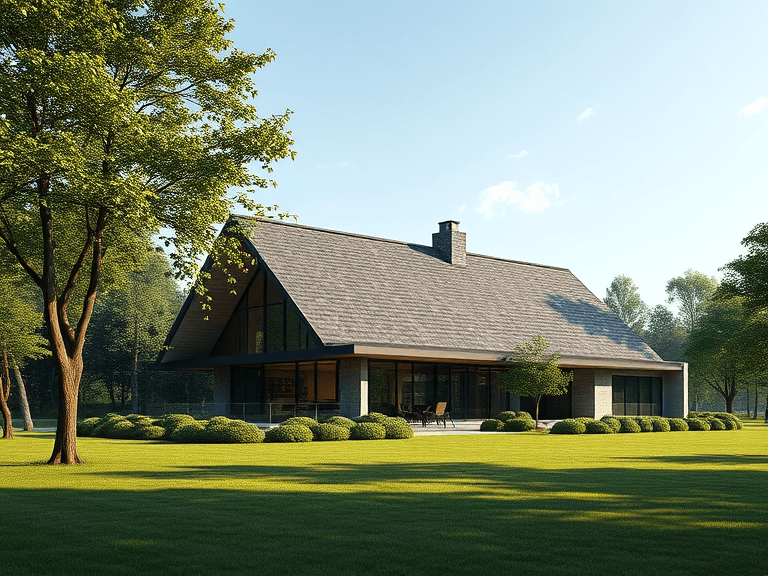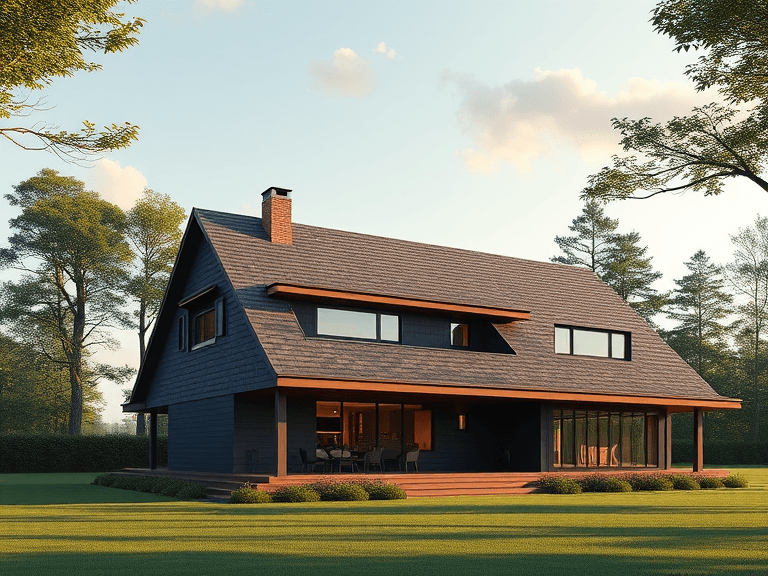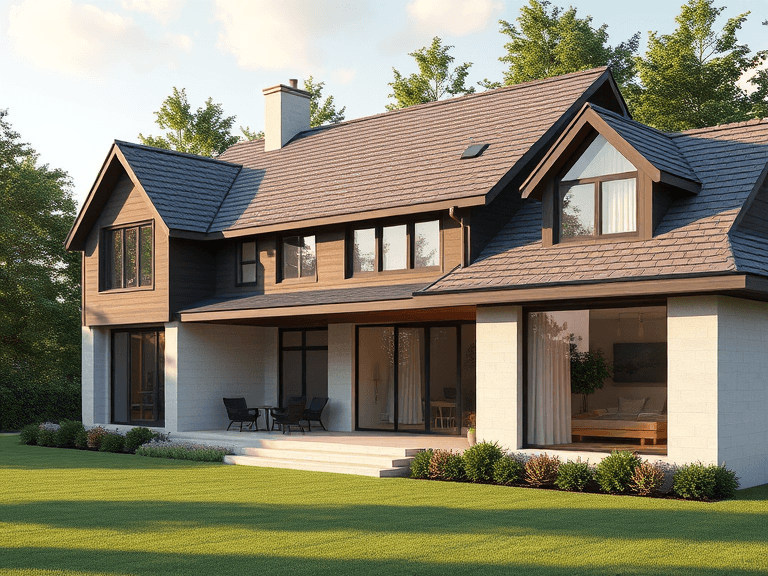
Cedar shingles, traditionally made from western red cedar or eastern white cedar, are thin, tapered pieces of wood that are commonly used in roofing and siding applications. Known for their natural beauty, these shingles add a rustic charm to a variety of architectural styles, making them a popular choice among homeowners and builders alike. The appeal of cedar shingles extends beyond their aesthetic qualities; they are also valued for their durability and effectiveness as a building material.
As a roofing material, cedar shingles offer a unique combination of insulation properties and weather resistance. They can help regulate temperature within a home, contributing to energy efficiency. When properly installed and maintained, cedar shingles can last for decades, demonstrating their potential longevity. In siding, their natural ability to resist decay and insect infestation makes them suitable for varied climates, further solidifying their role in residential construction.
Beyond functionality, cedar wood has inherent properties that enhance the livability of any space. Its natural oils provide a degree of resistance to moisture, making cedar shingles less prone to warping or rotting compared to other wooden options. This feature, coupled with the shingles’ sophisticated look, encourages many homeowners to opt for cedar for both traditional and contemporary designs.
Overall, the popularity of cedar shingles in residential construction stems from their unique blend of aesthetic appeal and practical advantages. However, to understand cedar shingles fully, it is essential to examine both the benefits and drawbacks associated with their installation. This examination will reveal important considerations for potential users, impacting decisions related to roofing and siding choices in homes.
Benefits of Cedar Shingles
Cedar shingles are renowned for their numerous advantages, making them a highly sought-after roofing material for homeowners. One of the primary benefits is their durability. Cedar wood is naturally resistant to decay due to its low moisture content and high oil content, which significantly enhances the longevity of the shingles. This natural resistance extends their lifespan, often lasting over 30 years with proper maintenance, an excellent choice for those seeking a long-term investment. Additionally, cedar shingles are resistant to insects, such as termites, reducing the risk of damage and the need for frequent repairs.
Another significant advantage is the insulation properties of cedar shingles. The unique structure of cedar wood provides excellent thermal insulation, helping to maintain a comfortable indoor temperature. This can lead to notable energy savings, as homes with cedar shingles require less heating in the winter and cooling in the summer. The insulating properties contribute not only to energy efficiency but also to enhanced comfort within the living space.
Aesthetically, cedar shingles offer remarkable versatility. Available in various styles and finishes, these shingles can complement a range of architectural designs—from rustic cabins to modern homes—enhancing the overall curb appeal. The natural beauty of cedar wood, characterized by its rich colors and unique grain patterns, adds warmth and charm to any home exterior. Furthermore, the availability of staining options allows homeowners to customize the look of their shingles, increasing their property’s value.
Finally, cedar shingles are considered an eco-friendly building material, as they are made from a renewable resource. Choosing cedar can demonstrate a commitment to sustainability, appealing to environmentally-conscious homeowners. With their combination of durability, insulation, visual appeal, and sustainability, cedar shingles present numerous benefits that make them an exceptional roofing option.
Drawbacks of Cedar Shingles
Cedar shingles, while known for their aesthetic appeal and natural durability, also come with several notable drawbacks that potential homeowners should consider. One significant drawback is their higher initial cost when compared to other roofing materials such as asphalt shingles. The price of cedar shingles can be two to three times more than that of traditional materials, which may pose a financial burden, especially for budget-conscious homeowners. This initial investment can be a deterrent for many, making it crucial to weigh the long-term benefits against upfront expenses.
Another prominent issue with cedar shingles is their susceptibility to weather conditions. Extreme weather events, including heavy rain or high winds, can lead to damage. Over time, cedar can be prone to warping, curling, and cracking due to these environmental stressors. In regions with harsh climatic conditions, frequent replacement or repairs may become necessary, increasing the overall lifetime cost of the roofing system.
Additionally, the maintenance requirements for cedar shingles can be quite demanding. Regular inspections, cleaning, and treatment with sealants or preservatives are essential to prolong their life span and maintain their appearance. Without proper care, cedar shingles can develop rot or suffer from mold growth, both of which compromise the integrity of the roofing structure. Furthermore, cedar does not have the best fire rating compared to other roofing materials, rendering it less suitable for areas prone to wildfires. While it can be treated to improve this rating, the added treatment costs may further elevate the financial consideration for homeowners. Thus, while the aesthetic and insulation benefits are clear, the drawbacks of cedar shingles deserve thorough examination before committing to installation.
Cost Analysis of Cedar Shingle Installation
The installation of cedar shingles is often regarded as a significant investment for property owners. When considering this roofing option, it is essential to conduct a thorough cost analysis to understand both the initial and long-term financial implications. Initially, the cost of cedar shingles can be higher than many traditional roofing materials, with prices typically ranging from $4 to $7 per square foot depending on the quality and grade of cedar chosen. This variation in price can affect the total material expenses considerably, especially for larger roofing projects.
In addition to the material costs, labor is another substantial factor in the overall expenditure of installing cedar shingles. Professional installation is highly recommended due to the specific skills and techniques required for proper application. Labor costs can range from $2 to $5 per square foot, depending on the contractor’s rates and local market conditions. Furthermore, it is crucial to consider the geographical location when estimating labor costs, as these can fluctuate significantly based on demand and regional pricing trends.
Long-term costs associated with cedar shingles should also be factored into the overall budget. While these shingles are known for their durability, they do require regular maintenance and occasional repairs to preserve their integrity and aesthetic appeal. Homeowners should anticipate spending on treatments to prevent rot and insect damage, which can range from $300 to $800 every few years, depending on the size of the roof and local environmental conditions. Additionally, in areas prone to severe weather, property owners may need to allocate funds for repair work after storms. Understanding this comprehensive cost analysis of cedar shingle installation helps readers make informed decisions about their roofing options and appreciate the investment in cedar shingles in terms of both financial implications and longevity.both, impacting the overall budget for the roof project.

Maintenance Requirements for Cedar Shingles
Cedar shingles, renowned for their natural beauty and durability, necessitate regular maintenance to ensure their longevity and maintain their aesthetic appeal. One of the primary maintenance tasks involves routine inspections, ideally conducted twice a year. During these inspections, homeowners should check for any signs of damage, such as cracks, splits, or warping. Early detection of these issues can prevent more severe problems down the line and prolong the life of the shingles.
Cleaning is another essential aspect of cedar shingle maintenance. Over time, debris, dirt, and organic material such as moss or algae can accumulate on the shingles, compromising their integrity and appearance. It is advisable to clean the shingles with a gentle mixture of water and a mild detergent, using a soft brush to remove the buildup without causing damage. Avoid the use of high-pressure washing, as the force can strip away the protective outer layer of the cedar, increasing vulnerability to the elements.
In addition to cleaning, treating cedar shingles with an appropriate finish is crucial. Applying a protective sealant specially formulated for wood can help prevent moisture penetration, which is a common threat to cedar. Treatments should be reapplied every few years, depending on the product used and environmental conditions. Regular treatment safeguards against the growth of fungi and preserves the natural color of the wood.
Furthermore, proper ventilation in attics and eaves can play a vital role in the maintenance of cedar shingles. Ensuring adequate airflow helps reduce moisture buildup, which can lead to problems like rot and mold. In conclusion, regular inspections, thorough cleaning, appropriate treatments, and ensuring proper ventilation are indispensable practices for maintaining cedar shingles, representing both commitment and an investment in their long-term performance.
Comparison with Other Roofing Materials
Cedar shingles have gained popularity in the roofing industry due to their unique aesthetic appeal and natural properties. However, it is essential to compare them with other popular roofing materials such as asphalt shingles, metal roofing, and slate to provide a comprehensive understanding of their relative advantages and disadvantages.
Asphalt shingles are one of the most common roofing materials used in residential homes. They are generally more affordable compared to cedar shingles, making them an appealing option for budget-conscious homeowners. Additionally, asphalt shingles are relatively easy to install and offer decent durability, usually lasting around 20 to 30 years. However, they lack the natural beauty and unique charm that cedar shingles provide, often leading to a less visually appealing outcome.
Metal roofing is another option that is gaining traction, known for its exceptional durability and longevity, often lasting over 50 years with proper maintenance. It can withstand extreme weather conditions and is resistant to rot, making it an advantageous choice in areas prone to harsh climates. However, metal roofing tends to be more expensive than both cedar and asphalt options, and its aesthetic appeal may not match the traditional look of cedar shingles, which could deter those desiring a classic home appearance.
Slate roofing is regarded as a premium choice among roofing materials, providing an unmatched level of durability and an elegant, timeless appearance. Like cedar shingles, slate roofs are highly durable, with lifespans exceeding 75 years. However, they are among the most expensive materials available. Installation can also be a complex process due to the heaviness of the slate. Although cedar shingles require maintenance, they offer a moderate price point combined with visual distinction, making them a solid competitor in the roofing landscape.
Ultimately, the choice of roofing material should consider factors such as cost, durability, aesthetic preferences, and maintenance requirements. An examination of these aspects can provide homeowners with the insight needed to select the most suitable roofing material for their specific needs.
Environmental Impact of Cedar Shingles
Cedar shingles are often favored for their aesthetic appeal and durability; however, their environmental impact is a critical consideration for potential users. One of the primary advantages of cedar shingles lies in their sustainability. Cedar trees grow relatively quickly compared to other hardwoods, making them a renewable resource when sourced responsibly. It is important to procure cedar from sustainably managed forests, as this ensures that the ecological balance is maintained. Organizations such as the Forest Stewardship Council (FSC) certify wood products that are harvested from responsibly managed forests, ensuring that the environmental integrity of forest ecosystems is preserved.
When examining the carbon footprint of cedar shingles in comparison to synthetic alternatives, cedar demonstrates a relatively lower environmental impact. Natural cedar wood absorbs carbon dioxide as it grows, thus contributing to carbon sequestration. Moreover, once installed, cedar shingles will continue to sequester carbon throughout their lifespan. In contrast, synthetic alternatives, which are often produced from non-renewable resources, tend to result in higher carbon emissions during manufacturing and transportation.
Another environmentally friendly characteristic of cedar shingles is their biodegradability. At the end of their service life, cedar shingles break down naturally, returning nutrients to the soil. This is a significant advantage over synthetic roofing materials, which can take hundreds of years to decompose and may leach harmful chemicals into the environment.
In terms of energy efficiency, cedar shingles naturally offer thermal insulation properties, which can reduce the energy required for heating and cooling homes. This attribute not only creates a more pleasant living environment but also minimizes energy consumption over time.
Through a thorough understanding of the environmental considerations associated with cedar shingles, homeowners can make informed decisions that align with their ecological values and sustainability goals. When considering natural roofing options, cedar shingles emerge as a commendable choice that balances functionality with environmental consciousness.
Trends in Cedar Shingle Usage
The use of cedar shingles in contemporary architecture has witnessed a resurgence, reflecting a blend of tradition and innovation. This rise in popularity can be credited to various factors including evolving design trends, advancements in technology, and shifting consumer preferences. The aesthetic versatility of cedar shingles allows them to harmonize with a multitude of architectural styles, from rustic cabins to modern homes.
One of the notable trends is the shift towards natural finish treatments that enhance the inherent beauty of cedar while providing protection against the elements. Clear coatings that allow the wood’s grain and color to shine through are gaining traction, as homeowners increasingly seek to maintain the organic feel of their spaces. Moreover, the popularity of darker stains has emerged; these not only offer a contemporary look but also help in creating striking contrasts against lighter exterior elements.
In addition to color preferences, design flexibility has also expanded. Innovative installations, such as curved or patterned layouts, have become more prominent. Homeowners and architects are now looking beyond traditional flat or staggered patterns and experimenting with creative arrangements. This reflects a growing desire to personalize residential exteriors, allowing for unique expressions of style and identity.
Advancements in technology, such as improved lumber treatment methods and high-performance sealants, have also played a crucial role in influencing consumer preferences. These modern treatments enhance the durability and longevity of cedar shingles, addressing some of the drawbacks associated with their installation. As a result, cedar shingles are increasingly perceived as a sustainable and resilient option, poised to withstand changing climate conditions while minimizing maintenance requirements.
The inextricable link between aesthetics and functionality means that cedar shingles will continue to evolve within the architectural landscape, aligning with the trends shaped by technological advancements and consumer preferences in the years to come.
Conclusion: Is Cedar Shingle Installation Worth It?
When evaluating the installation of cedar shingles, several advantages and disadvantages must be considered to reach a well-informed decision. On the positive side, cedar shingles are renowned for their natural beauty and aesthetic appeal, providing a warm, rustic charm to any property. Their ability to insulate well contributes to energy efficiency, making them an attractive option for homeowners seeking sustainable building materials. Additionally, cedar has natural resistance to decay and insects, which can lead to lower maintenance costs over the lifespan of the roofing. The longevity of cedar shingles, when properly installed and maintained, can often exceed several decades, making them a viable long-term investment.
However, it is crucial to address the drawbacks associated with cedar shingle installation as well. The initial cost of cedar shingles can be significantly higher than other roofing materials, putting them out of reach for some budgets. Moreover, while they resist decay, they still require routine maintenance, such as cleaning and periodic treatments, to preserve their condition and appearance. Cedar can also be susceptible to fire unless treated with a fire retardant, which reinforces the need for careful consideration of local building codes and regulations. Lastly, any climate considerations, including heavy rainfall or extreme weather, can affect the performance of cedar shingles, potentially leading to an increase in replacement costs.
Balancing these factors is essential for homeowners and builders contemplating cedar shingle installation. The decision ultimately comes down to personal preference, budgetary considerations, and the specific requirements of the property. If the benefits align with the priorities of the project, cedar shingles may be the perfect fit; however, assessing both the merits and potential drawbacks is vital for ensuring a satisfactory outcome.




